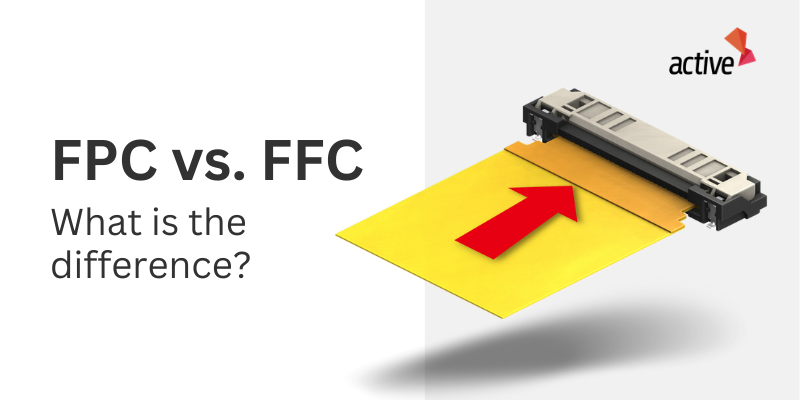
What’s the difference between FPC and FFC?
In the dynamic world of modern electronics, understanding the components that drive innovation is crucial. In this article, we dive into electronics to explore two key elements: Flexible Printed Circuit (FPC) and Flexible Flat Cable (FFC), showing you the differences between them.
What is FPC?
A Flexible Printed Circuit (FPC) is a type of electronic circuit characterised by its flexibility and foldability, constructed with one or more layers of copper traces on a polyester base. FPCs are lighter and thinner, offering increased flexibility compared to traditional rigid circuit boards. Their flexible design makes it possible to mount electronic components directly onto their traces, even in configurations with overlapping traces. There are many different types of FPC, including single-layer, double-sided, and multilayer flex circuits.
Single-sided flexible circuits feature a solitary conductor layer, crafted from either metal or conductive polymer, on a flexible dielectric film. Conversely, double-sided flex circuits incorporate two conductor layers, enabling more intricate circuit designs and enhanced functionality.
Multilayer flex circuits are comprised of three or more layers of conductors. Typically, these layers are interconnected through plating via holes. It's worth noting that while commonly achieved through plating through holes, this method is not obligatory, as alternatives such as creating openings to access lower circuit-level features are also feasible.
What is FFC?
FFC, short for Flexible Flat Cable, is a type of electrical cable that is both flat and flexible. These cables have straight conductors bonded in a flexible plastic film and come in various sizes, such as 0.5mm, 1.00mm, and 1.25mm. FFCs often have a stiffener on one side to make the contact portion easier to plug into connectors. They are typically used for simple connections in high-density electronics, such as laptops and smartphones.
What are the differences?
FFC and FPC are often confused because they share a similar flat appearance and both handle data transfer. However, they are very different.
FFC typically has straight conductors with pinouts either 1 to 1 or 1-n. In contrast, FPC offers more flexibility with various pinouts, multi-layered structures, and the ability to cross conductors.
FPC can also be impedance controlled, making it suitable for applications like LVDS. Additionally, FPC can be designed with bends and angles, not just limited to rectangular shapes.
Active provides customisable solutions for FPC/FFC assemblies, tailored to meet your specific needs. Whether you require FPC or FFC, our services are designed to align precisely with your application requirements.

